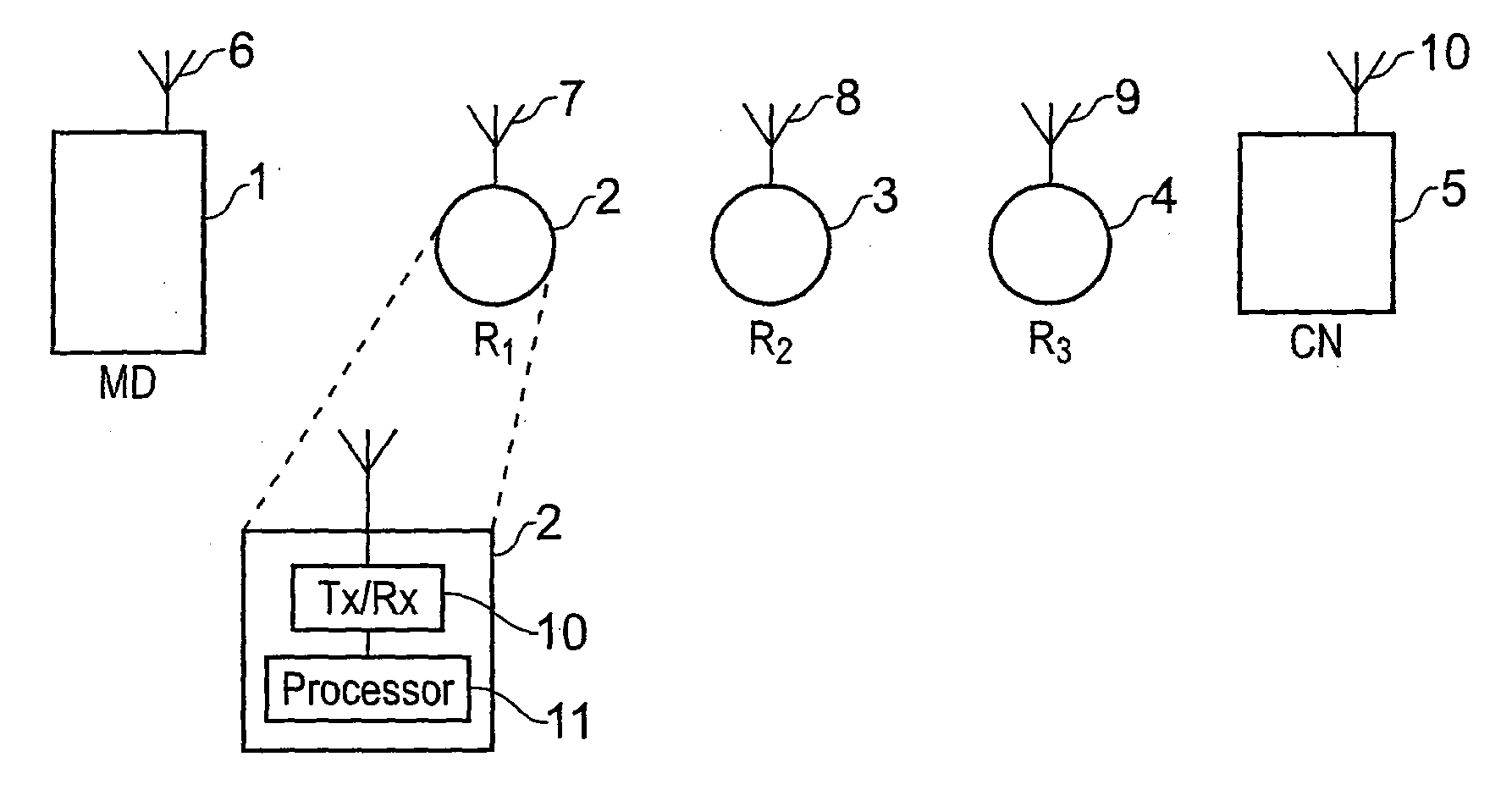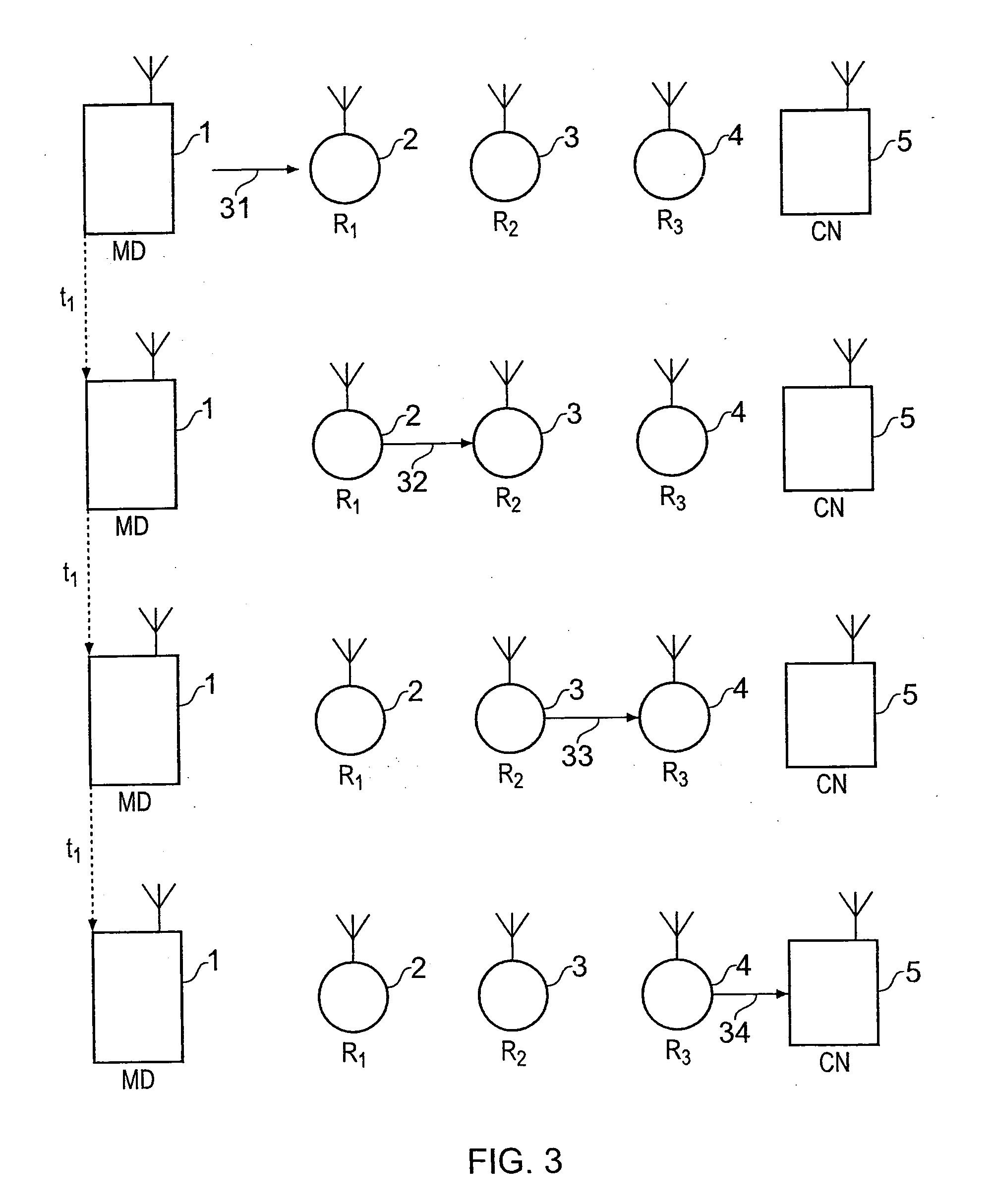Telecommunications system and method
a technology of telecommunications system and method, applied in the field of telecommunication system and method, can solve problems such as the delay in the transmission of upstream data, and achieve the effect of increasing the transmission speed of upstream data
- Summary
- Abstract
- Description
- Claims
- Application Information
AI Technical Summary
Benefits of technology
Problems solved by technology
Method used
Image
Examples
example embodiment
[0042]FIG. 7 provides a diagram of an embodiment of the present invention with a more complex network arrangement than that in FIG. 1. A network of repeater nodes 36 comprises repeater nodes R1 to R16. The repeater nodes may be wireless repeater nodes which communicate via a radio interface which may for example be a short-range spread spectrum radio interface based for example on IEEE 802.15.4. Additionally the repeater nodes may include their own power supplies and therefore not require a connection to a fixed mains supply. The control node 731 includes a wireless communication interface 737 in order to communicate with repeater nodes which are within range. The control node may be connected via an interface 732, such as Ethernet for example to a control interface 34 allowing the control node to be controlled by a user. The control interface might be a web interface operating on a personal computer. The control node 731 and the control interface 734 might be connected via a networ...
PUM
 Login to View More
Login to View More Abstract
Description
Claims
Application Information
 Login to View More
Login to View More - R&D
- Intellectual Property
- Life Sciences
- Materials
- Tech Scout
- Unparalleled Data Quality
- Higher Quality Content
- 60% Fewer Hallucinations
Browse by: Latest US Patents, China's latest patents, Technical Efficacy Thesaurus, Application Domain, Technology Topic, Popular Technical Reports.
© 2025 PatSnap. All rights reserved.Legal|Privacy policy|Modern Slavery Act Transparency Statement|Sitemap|About US| Contact US: help@patsnap.com



